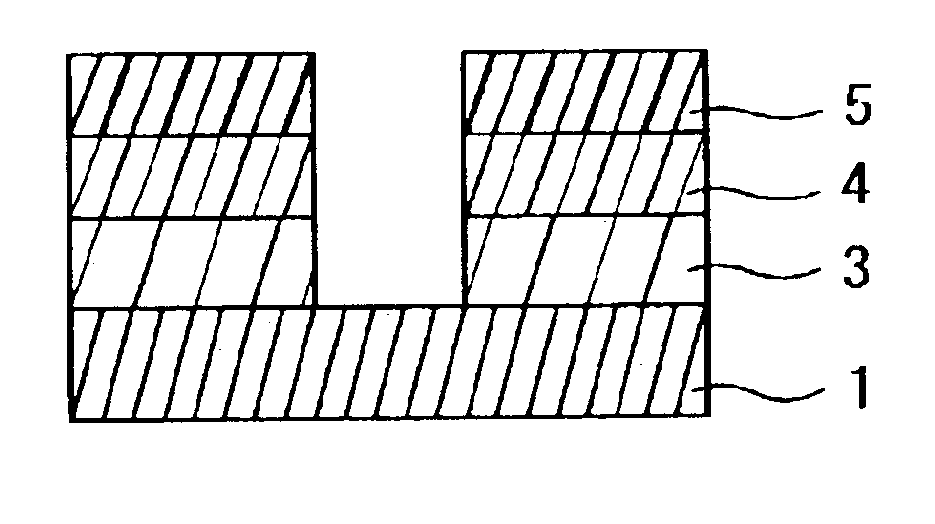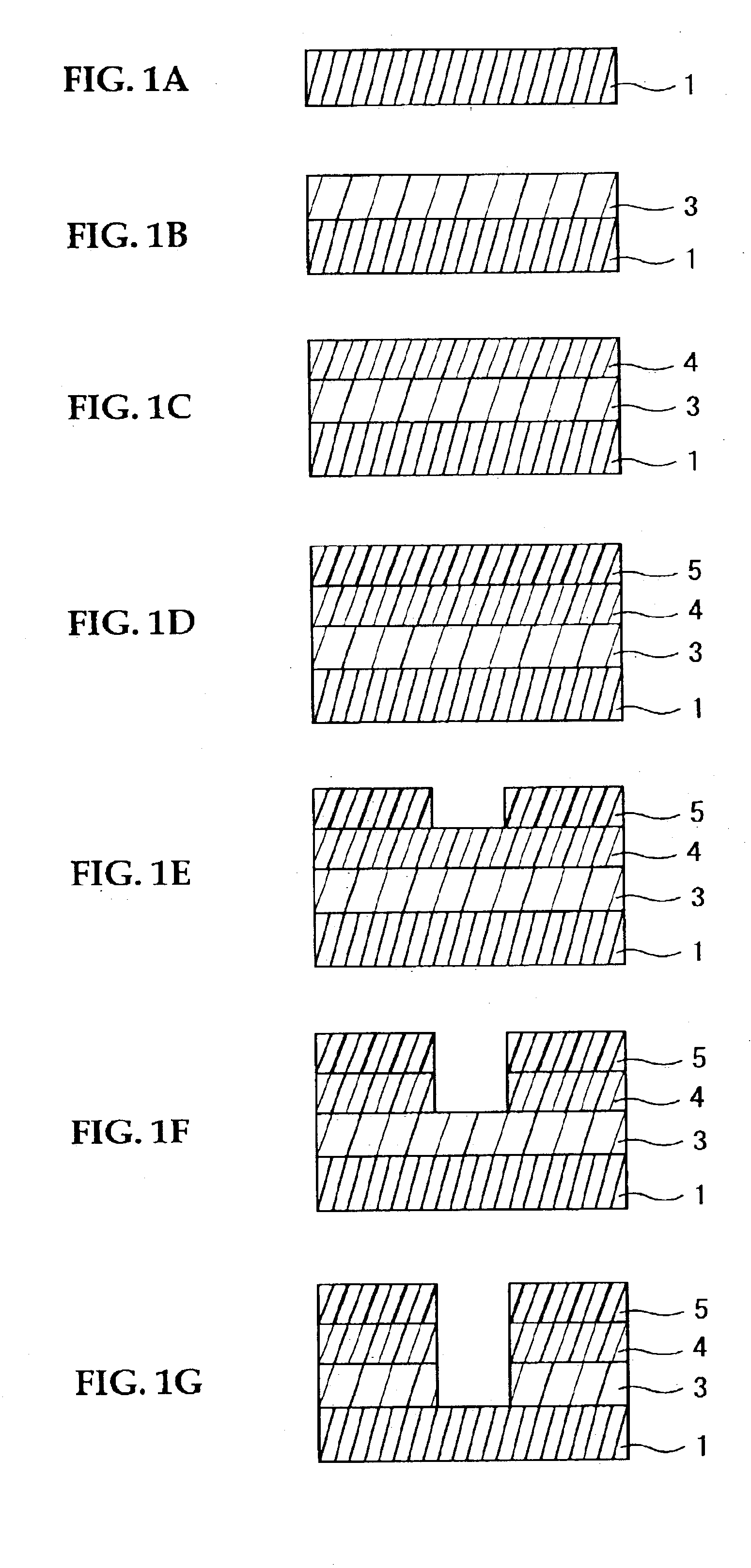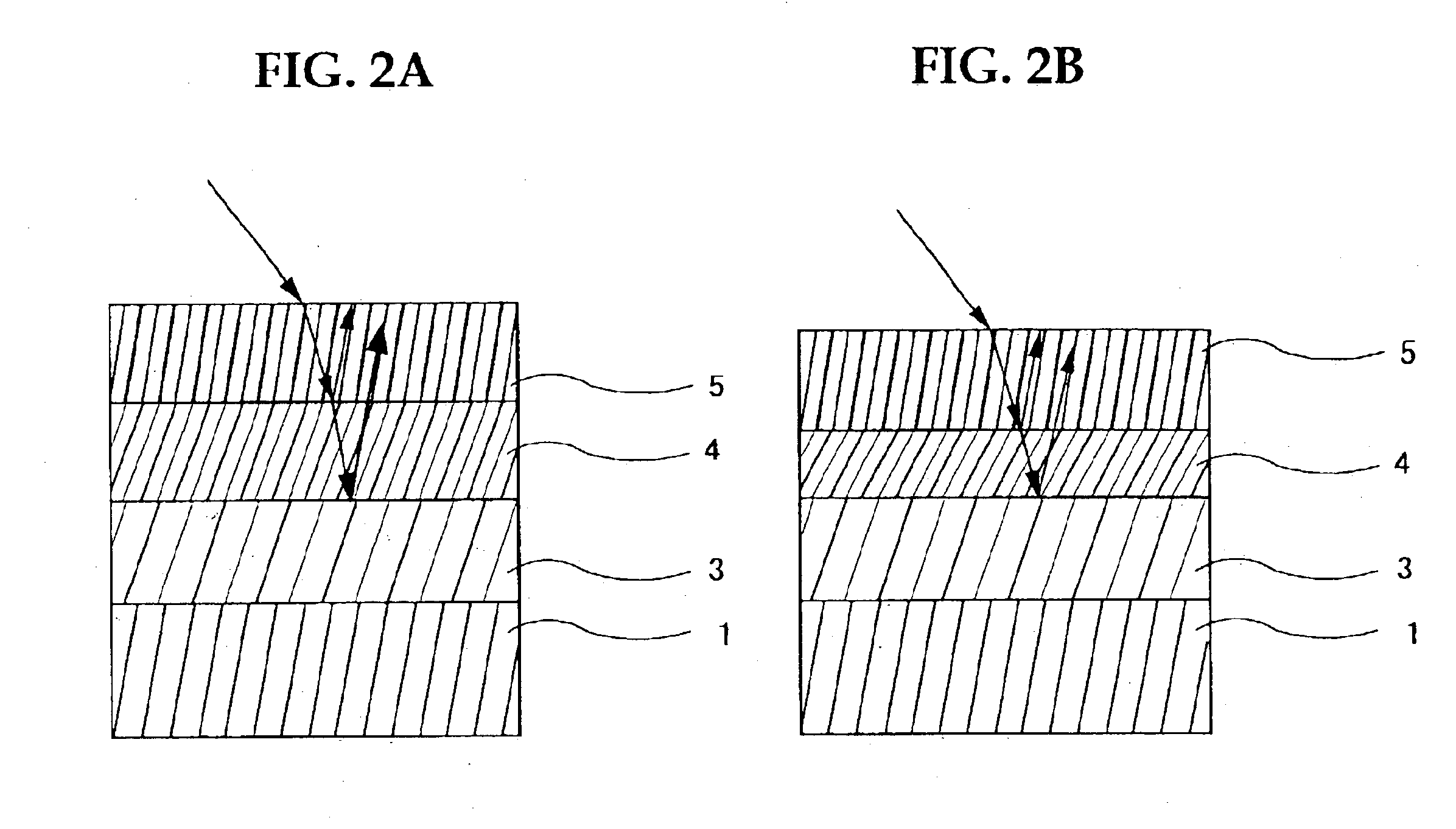Method of manufacturing semiconductor device and method of forming pattern
a semiconductor device and pattern technology, applied in the direction of semiconductor devices, photomechanical devices, instruments, etc., can solve the problems of high manufacturing cost, inability to form fine resist patterns, and inability to achieve high-performance and accurate patterning of surface layers, etc., to achieve convenient, high-quality, easy-to-use results
- Summary
- Abstract
- Description
- Claims
- Application Information
AI Technical Summary
Benefits of technology
Problems solved by technology
Method used
Image
Examples
experiment 1
[0104]Referring into FIG. 7, a resist for the innermost layer (PFI-37M, manufactured by Sumitomo Chemical Co., Ltd.) was coated to a thickness of 300 nm on a substrate 1 to be worked. Thereafter, baking was carried out for 60 seconds at 200° C., and the innermost layer (lower layer) 3 was thus formed. Note that the extinction coefficient k of the innermost layer (lower layer) 3 was 0.54. Next, a composition for inner layer formation was coated to have a thickness of 85 nm (0.085 μm) on the innermost layer (lower layer) 3. Baking was carried out for 60 seconds at 200° C., and the inner layer (intermediate layer) 4 was thus formed on the innermost layer (lower layer) 3. The composition for inner layer formation was a solution in which the polysiloxane compound expressed by following Formula (4) was dissolved in methyl amyl ketone (MAK). The extinction coefficient k of the inner layer (intermediate layer) 4 was 0.36. Note that error of the measurement of the extincti...
experiment 2
[0108]An accurate and fine hole pattern such as that of Experiment 1 was formed in the same way as in Experiment 1, except that the resist for the innermost layer (PFI-37M, manufactured by Sumitomo Chemical Co., Ltd.) was replaced with adamantyl methacrylate, 4,4-diazidochalcone, and propylene glycol monomethyl acetate (PGMEA) was used as the solvent, and the extinction coefficient k of the innermost layer (lower layer) was changed from 0.36 to 0.45 (innermost Layer (lower layer) is Not Light Absorbent).
[0109]As shown in FIG. 8, it is clear from Experiments 1 and 2 that when the inner layer (intermediate layer) is formed by using a polyorganosiloxane compound (which has a light absorbent group) expressed by the above Formula (4), the inner layer (intermediate layer) is light absorbent and has low reflectance, and in this case, it is therefore clear that the patterning accuracy improves and there is little dispersion in thickness (the dimensional uniformity improve...
experiment 3
(Experiment 3)
[0111]As shown in FIG. 10A, an insulating film 2, which served as an object to be worked and which was prepared by baking an organic film, was formed on an Si wafer 1 serving as a substrate. Composition A for innermost layer formation, which served as the material for an innermost layer (lower layer) 3 and which was prepared by dissolving a novolak resin in a solvent and adding a surfactant as an additive, was coated by the spin coating method on the insulating film 2. Thereafter, pre-baking was carried out for 60 seconds at 200° C. Thereafter, baking was carried out for, 60 seconds at 350° C., and the innermost layer (lower layer) 3 having a thickness of 85 nm was formed on the insulating film 2. Note that the extinction coefficient k of the innermost layer (lower layer) 3 was 0.54 (the innermost layer (lower layer) 3 was light absorbent).
[0112]Next, as shown in FIG. 10B, an organic precursor substance (siloxane A) serving as a material for inner layer formation was c...
PUM
 Login to View More
Login to View More Abstract
Description
Claims
Application Information
 Login to View More
Login to View More - R&D
- Intellectual Property
- Life Sciences
- Materials
- Tech Scout
- Unparalleled Data Quality
- Higher Quality Content
- 60% Fewer Hallucinations
Browse by: Latest US Patents, China's latest patents, Technical Efficacy Thesaurus, Application Domain, Technology Topic, Popular Technical Reports.
© 2025 PatSnap. All rights reserved.Legal|Privacy policy|Modern Slavery Act Transparency Statement|Sitemap|About US| Contact US: help@patsnap.com



